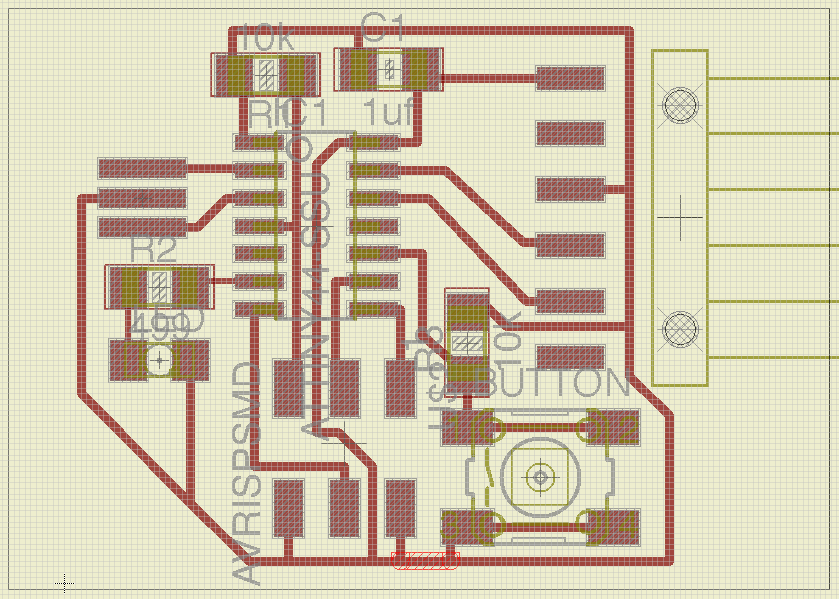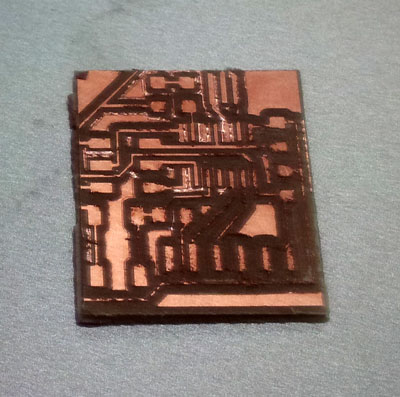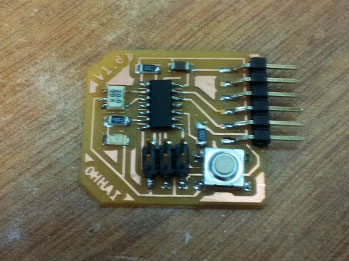Electronics Design
2. Add (at least) a button and LED (with current-limiting resistor).
3. Check the design rules.
4. Make it (export files, mill and stuff the board.
Six weeks in, things are getting serious! I'll admit, before starting this week I could have given you a fairly assertive but almost completely incorrect definition of components such as the capacitor, resistor and diode. If you had then asked me to design and print my own circuit with them... well, frankly I'd have had no idea where to start! That precise exercise was this week's task and thankfully I came out reasonably unscathed.
Our lecture was probably one of the most jam-packed, information dense talks I've ever witnessed. Neil expeditiously waltzed through detailed explanations of the components we'll be using, and how we can find and use their documentation.

Among other resources he recommended the book Art of Electronics by Horwitz and Hill. I started it and definitely intend to read the entire thing but for now I wanted simple concise definitions and (lots of pictures!) and I found the book The Encyclopedia of Electronic Components Vol 1 to be perfect for my needs.
Using EAGLE
When designing the board, the AS220 tutorial was an indispensible aid.
-
 The vector I designed, with a mockup of the Apple logo to ensure it fitted correctly when cut.
The vector I designed, with a mockup of the Apple logo to ensure it fitted correctly when cut. -
 The positive and negative
The positive and negative -
 The final outcome, it was very fiddly to peel and place!
The final outcome, it was very fiddly to peel and place! -
 The final outcome, it was very fiddly to peel and place!
The final outcome, it was very fiddly to peel and place!
Thoughts about EAGLE
It took me a while to get used to working with EAGLE and I've found it to be unstable on my installation of OS X 10.8.2. But once I remembered to save regularly and recall the peculiar key/mousebutton combinations it uses, I found it to be quite powerful.
Always keep the board and the schematic view open when you are editing one or the other, otherwise you'll get warnings.
The grid can get a bit annoying, if you set it to a very low unit that gives you more flexibility for moving parts and routes around.
Autorouting isn't that great... for very simple circuits, you're generally better routing yourself, or letting it autoroute, ripping some bits up and then re-routing the dodgy areas yourself.
What Next?
My first attempt at cutting the board went badly because the copper wasn't properly fixed to the plate (and my cutout png wasn't inverted), but now I've seen it is the right size etc I'm happy to amend my design a bit and make the circuit a bit more complex in preparation for programming it.


